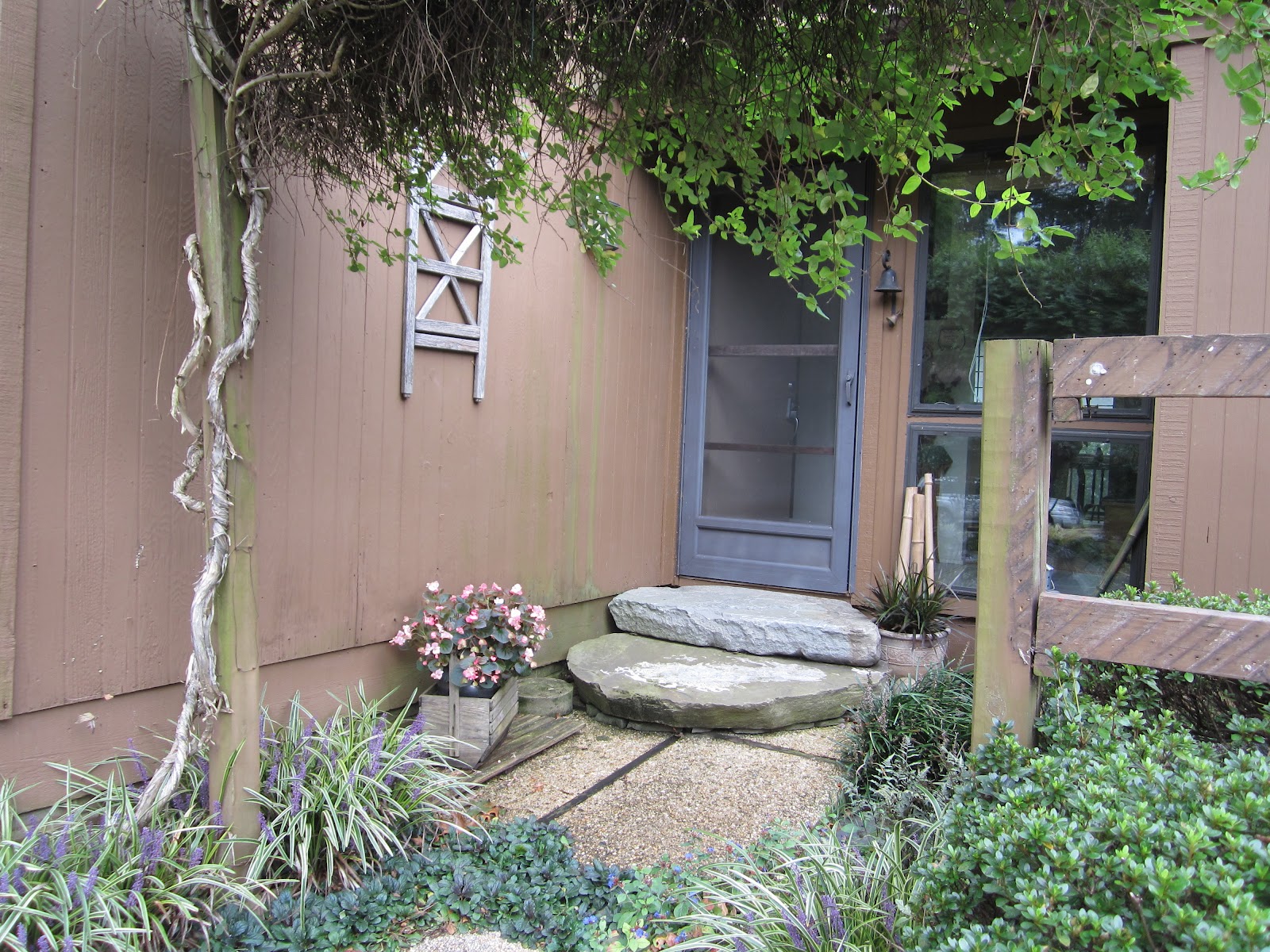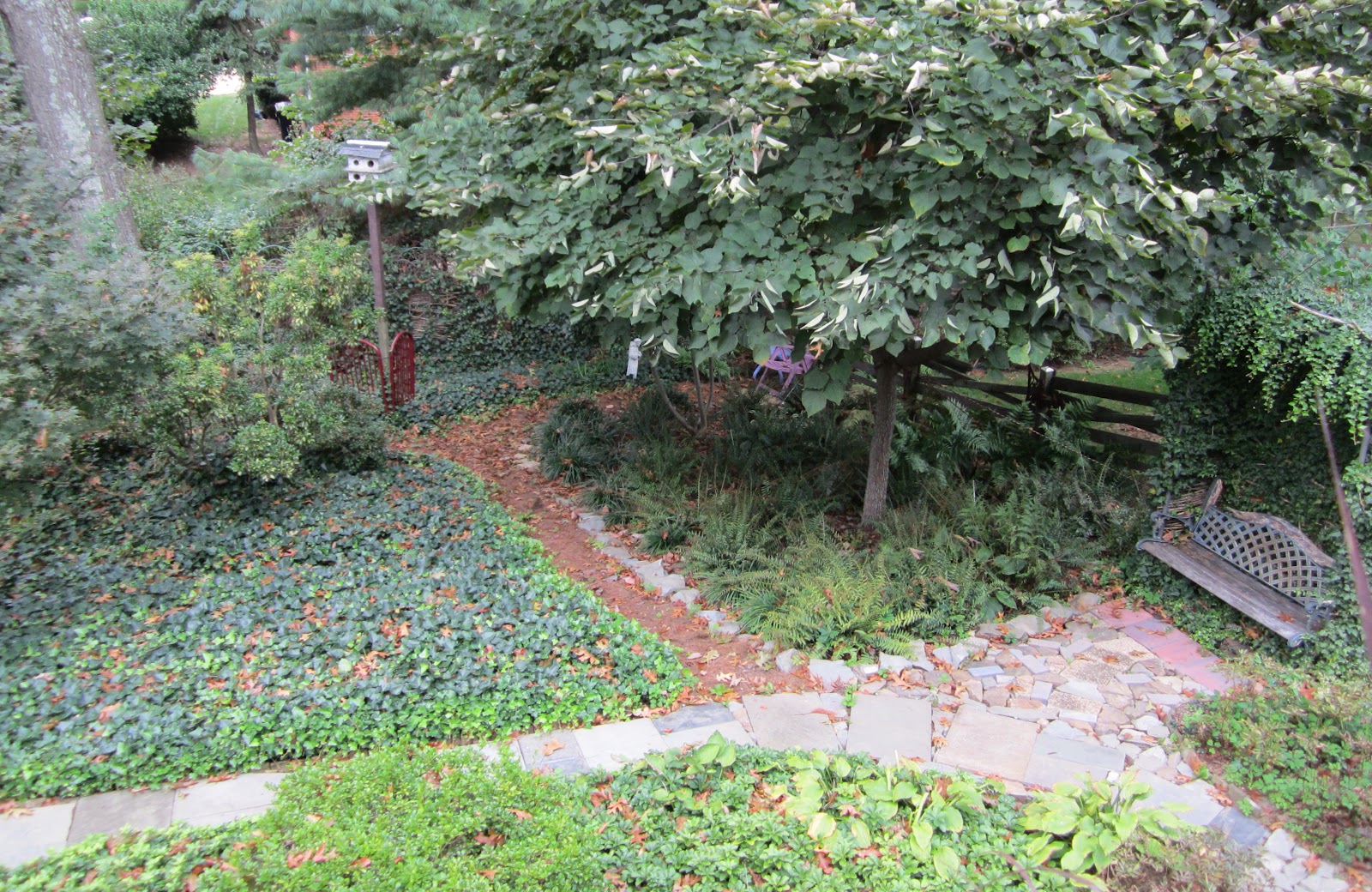Great gardens: No more lawn at this Annandale home
 |
| The Essers’ front yard. |
This is the first
article in what we hope will be a series on extraordinary gardens in the
Annandale area. Please email suggestions for other gardens to highlight.
plants, flowers, and ground cover with peaceful sitting areas connected by
stone pathways.
 “Grass is very boring,” says Esser, and even though
“Grass is very boring,” says Esser, and even though
flowers take more work, “they are much more gratifying.”
three-foot-wide strip by the driveway shortly after moving to the house, at
8809 Burbank Road, 29 years ago. Every year, more of the lawn was converted to
other types of plants, and about five years ago, there was “absolutely no grass”
left on the one-third acre property. The Essers sold their lawnmower and never
looked back.
in Japan.
Esser says Japan and Mexico are her strongest inspirations. Although both countries are so different, there are a lot of
similarities in gardening styles. “Both rely on stone; pottery; a little metal, usually iron; tile; and
water elements. And while Mexican gardens are very colorful, they can co-exist
with the green, foliage-centered Japanese garden.”
 |
| Cam Esser |
Cliff spend four months every winter in their apartment in Guadalajara, Mexico. They are both retired—Cam
had worked for the U.S. Chamber of Commerce and as an English-as-a-foreign-language
teacher at George Mason University—and the seven children they raised in a
blended family have grown up, so they have lots of time for vacations.
“camp hosts” in Virginia state parks. In return for helping out at the camp
sites, they get free parking for their pull-along trailer.
gardening, on average. She also loves to relax in the garden, so there are
plenty of benches and chairs, some of them rescued from the street, incorporated
throughout the yard in outdoor “rooms.” The screened-in deck at the rear of the
house, with skylights in the roof, is also a great place to enjoy nature. “A
garden is a resting place, as well as a working place,” she says.
 |
| Paths wind through the backyard. |
new things,” says Cam. She gets ideas from Green Spring Gardens, local nurseries,
and garden magazines.
well in the Washington area,” she says, such as hydrangea, hostas, impatiens, crepe
myrtle, and coleus.
 |
| The front door. |
Japan, she was taken with osmanthus, which has flowers in September that have an
intense orange/lemon fragrance. She found one in North Carolina, and it’s been
doing very well.
hydrangea, hostas, ferns, mandina, ornamental grasses, hellebore, and much more—she
got permission from VDOT to plant in the right of way between the sidewalk and
street. To do that, you have to submit your plans to VDOT, ensure that nothing
is taller than three feet, and pass an inspection.
 |
| The view from the deck. |
instead of herbicides, she pours boiling water on the weeds that grow between
cracks in the stone pathways.
of many a suburban gardener, Cam has learned to coexist with wildlife by
giving up on plants they destroy. So she’s not going to plant any more hosta,
as the deer eat the leaves and the chipmunks and voles attack the roots.
 |
| Portulaca, verbena, barberries, hostas, mums and ornamental grasses line the median. |
season, from April to November,” Cam says. But this summer, with many days over 100
degrees and very little rainfall, has been brutal for gardeners.
others were knocked down in more recent storms. That has resulted in more
sunlight, allowing a greater of variety of plants.
about it: “Unlike something you build, a garden can be changed all the time.”
There are always some plants that don’t survive or don’t work out as
anticipated, so she is always searching for something new.
Cam has found gardening “contagious.” When her neighbors
“saw some of the creative things you can do with a yard besides grow grass, they’ve
followed suit.”


This garden is beautiful and I want to know what she does to keep the weeds at bay. I know she said boiling water but I have tried that in the past and it still did not work. She must have some other secrets. I have a small garden which I seem not to be able to control the weeds. I put newspaper down and mulch on top and that did not even work. Does she give gardening classes? My one thing is why do people have to go through hoops to get permission to beautify their neighborhood through VDOT.
the boiling water works when dealing with weeds in cracks between stone and concrete surfaces, such as my sidewalks and walkways. otherwise, i weed by hand and i mulch my natural pathways heavily with pine needles and wood chips which means the weeds are fairly easy to remove. the biggest problem is the bindweed, which can quickly cover the plants. i keep after that several times a week. the right-of-way belongs to vdot, so you might be able to go ahead without their permission, but i thought it was the prudent thing to do.
Thank you Cam!
Any rodent problem? Anyone doing a home inspection would note if any of this overgrowth is next to the house.
thanks for share.